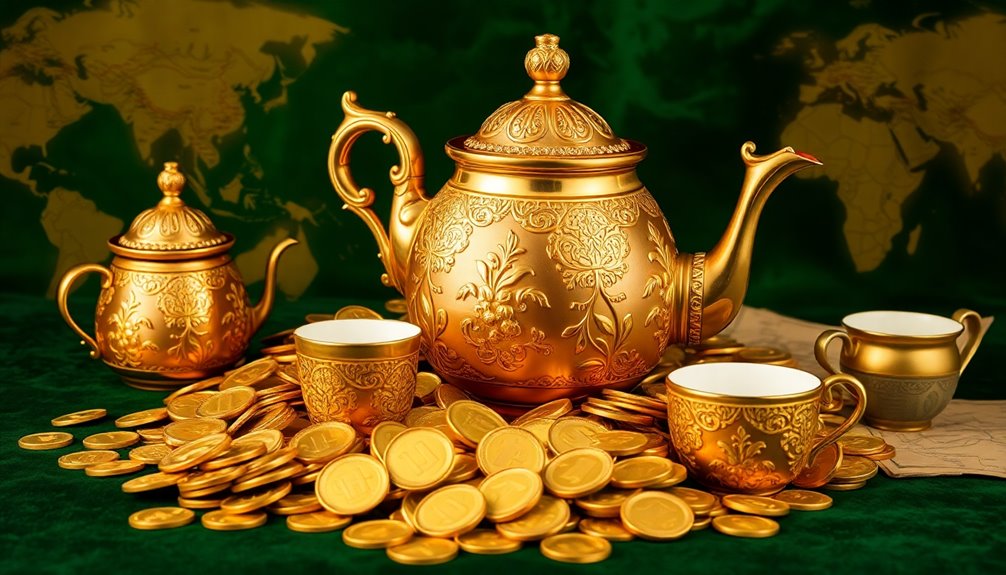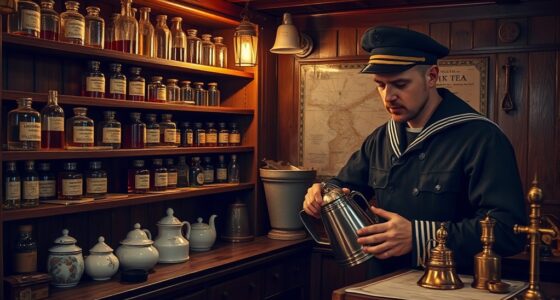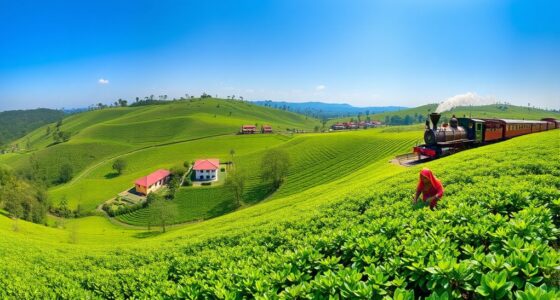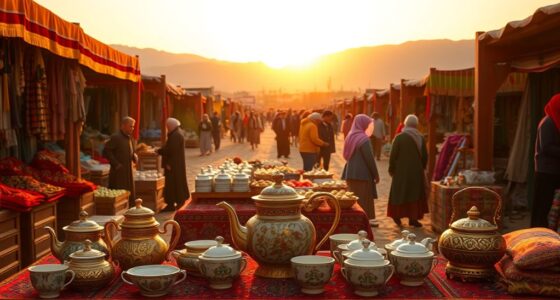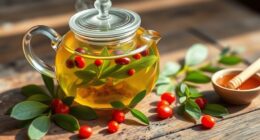Tea was once as valuable as gold because it shaped economies and cultures, especially in ancient China. You'd find tea bricks used as currency in areas without coins, making trade easier and more efficient. Its high demand created intricate trade routes, like the Silk Road, connecting communities and boosting local economies. Plus, tea had a social status tied to hospitality, making it a prized possession. During the 17th and 18th centuries, high taxes led to smuggling, turning tea into a symbol of rebellion. Excited to learn how this beverage influenced history? There's much more to discover!
Key Takeaways
- In ancient China, tea was highly valued, comparable to gold, due to its rarity and cultural significance.
- Tea bricks served as a practical currency, facilitating trade in regions lacking coins and enhancing its economic value.
- Intricate trade routes, like the Silk Road, established tea as a vital commodity, increasing demand and its worth.
- The long shelf life of tea preserved its value over time, making it an effective medium of exchange.
- High taxes on tea led to smuggling, transforming it into a symbol of rebellion, further elevating its status in society.
Introduction
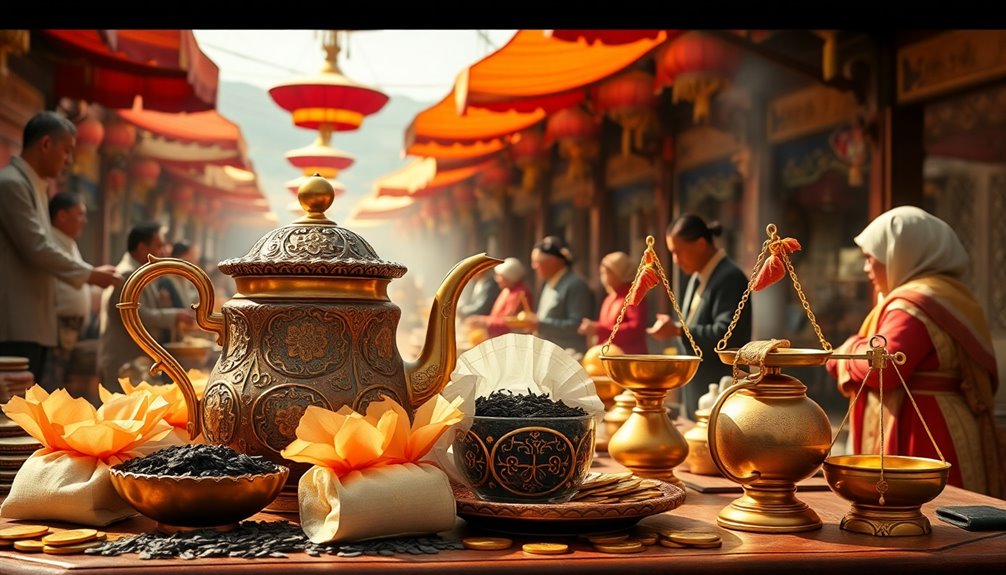
Tea has played a pivotal role in human history, shaping economies and cultures alike. Next time you sip your favorite brew, think about how tea was once as valuable as gold, especially in ancient China. In those times, tea bricks were a crucial form of currency in areas where coins simply weren't available. This shows just how much people valued tea!
The compressed tea bricks were easy to carry, much like how we think of gold today. Imagine traveling with something that not only quenches your thirst but also holds significant value. Plus, tea can last a long time, making it a reliable item to trade—much like precious metals.
Culturally, tea was more than just a drink; it represented hospitality and social status. Sharing tea with guests showed generosity and respect, elevating its worth in society.
This cultural importance helped create a flourishing tea trade in ancient China that stabilized local economies. So, the next time you enjoy your cup of tea, remember its rich history and how it's connected to trade, culture, and even wealth!
Tea Trade Routes and Value
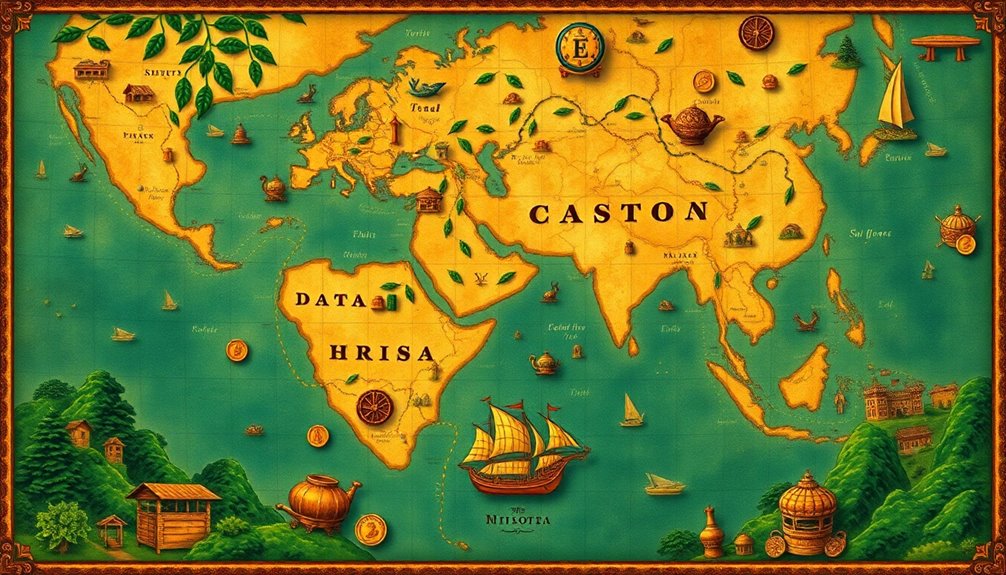
While many people enjoy a simple cup of tea, few realize the intricate network of trade routes that once facilitated its exchange. These routes, especially in ancient China, were vital for transporting tea bricks, which served not only as a delicious beverage but also as a form of currency.
In remote areas, where coins were hard to find, tea became a practical way to trade for goods and services. The trade routes connected various regions within China and extended to neighboring countries, creating a web of cultural and economic interactions centered around tea.
As demand grew, so did the value of tea, with its bricks often traded like gold. This high value highlighted how important tea was to people's lives. Key routes, like the famous Silk Road, helped establish tea as a crucial commodity.
This influence shaped trade dynamics and brought economic stability to regions involved in the tea trade. The groundwork laid by these routes set the stage for global tea commerce, showing just how significant tea has been throughout history.
Tea as Currency in Trade

Throughout history, tea's role has extended far beyond mere enjoyment; it became a practical currency in trade. In ancient China, tea bricks were essential, especially in remote areas where coins were hard to find. Imagine needing goods or services and trading with compressed tea bricks instead of coins! These bricks made it easy to transport tea, which was crucial for trade.
One of the best things about tea bricks was their long shelf life. This quality preserved their value, allowing them to work like modern-day money. Different types of tea, such as oolong, were used to create a versatile economic system.
When you think about it, tea trade wasn't just about exchanging goods; it helped establish trade routes that connected various communities. This connection brought economic stability to many regions in ancient China.
Tea's Role in Diplomacy
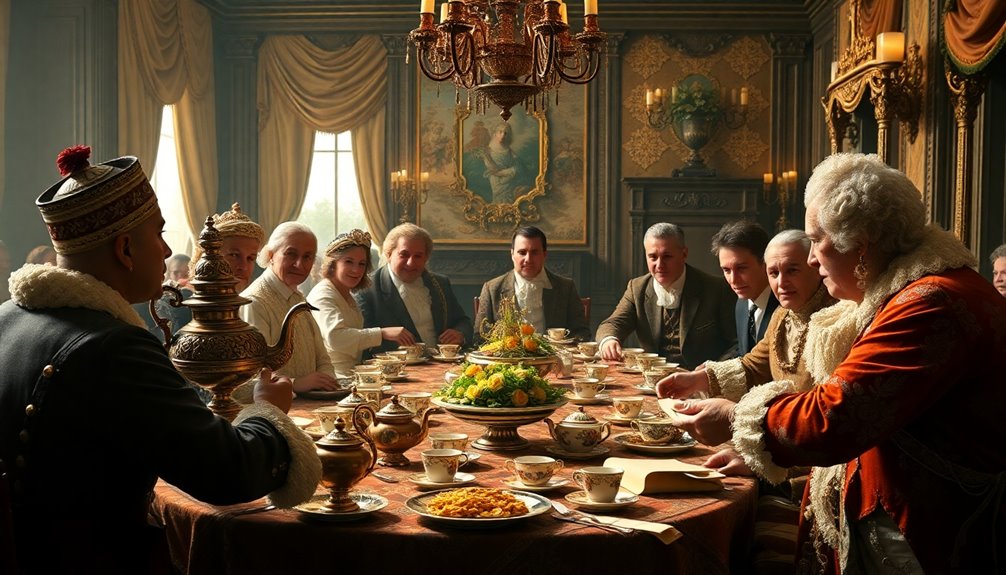
This exchange wasn't just about sipping tea; it was about building bridges between different cultures.
The significance of tea in these contexts shows its power as a tool for political and economic engagement.
Smuggling and Taxation Issues

Tea has long been more than just a beverage; it's been at the center of social and political dynamics. In the 17th and 18th centuries, high taxes on tea in England made it extremely pricey. Some people couldn't afford legal tea, so they turned to smuggling instead. With duties sometimes reaching up to 119% of tea's value, it's no wonder many chose to break the law.
Smugglers got creative! They hid tea in barrels, or even under false bottoms of ships, to avoid customs checks and sell it at more affordable prices. This underground trade became a big deal, leading to clashes between smugglers and customs officials. Imagine the tension during those encounters!
As smuggling grew, so did its impact on how people viewed tea. It transformed into a symbol of rebellion against heavy taxation. For many, drinking tea wasn't just about enjoying a warm cup; it represented a stand against unfair rules.
This cultural significance helped shape society in ways we still feel today. So, the next time you sip your tea, remember its exciting and rebellious history!
Practical Applications
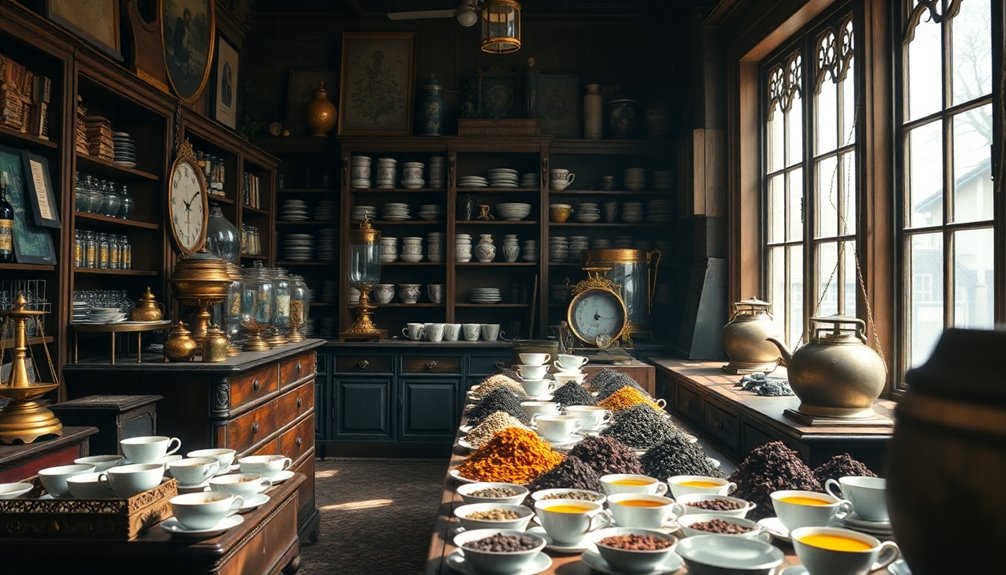
While many people enjoy tea for its flavor and aroma, its practical applications throughout history reveal a fascinating economic role. In ancient China, tea bricks served as a type of currency, especially in areas where traditional coins were hard to find. Imagine carrying a tea brick instead of coins! These compressed bricks were easy to transport, making trade efficient across long distances.
Tea's long shelf life is another reason it was valuable. You could store it for years, ensuring its worth didn't fade. Different types of tea, like oolong, were even used as money, showing how versatile this beverage was in economic exchanges.
The tea trade also helped create important trade routes. These routes not only connected communities but also promoted economic stability. When people exchanged tea, they built relationships and strengthened their economies.
Frequently Asked Questions
Why Was Tea so Valuable?
Tea was valuable because it facilitated trade, served as currency in remote areas, and symbolized hospitality. Its long shelf life and cultural significance boosted its desirability, creating economic stability and important trade routes in ancient societies.
Why Was Tea Valuable on the Silk Road?
On the Silk Road, you'll find tea valued for its rarity and cultural significance. Its demand drove prices up, making it a luxury item, while tea bricks facilitated trade across vast distances, enhancing its worth.
Was Tea Valuable in Ancient China?
Yes, tea was incredibly valuable in ancient China. You'd find it traded as currency, especially in remote areas. Its cultural significance and versatility only added to its worth, making it essential in daily life and commerce.
What Is the Most Sought After Tea in the World?
The most sought-after tea in the world includes Da Hong Pao, Tieguanyin, and Yellow Gold Tea Buds. Each boasts unique flavors and exceptional rarity, making them prized by tea enthusiasts and collectors alike.
Conclusion
In conclusion, tea was once as precious as gold, shaping trade and cultures around the world. Its journey from leaves to currency shows how valuable it truly was. Today, we can enjoy tea's rich history while sipping our favorite blends. So, next time you brew a cup, think about its incredible past and how it sparked adventures and connections. Tea isn't just a drink; it's a story waiting to be shared!

